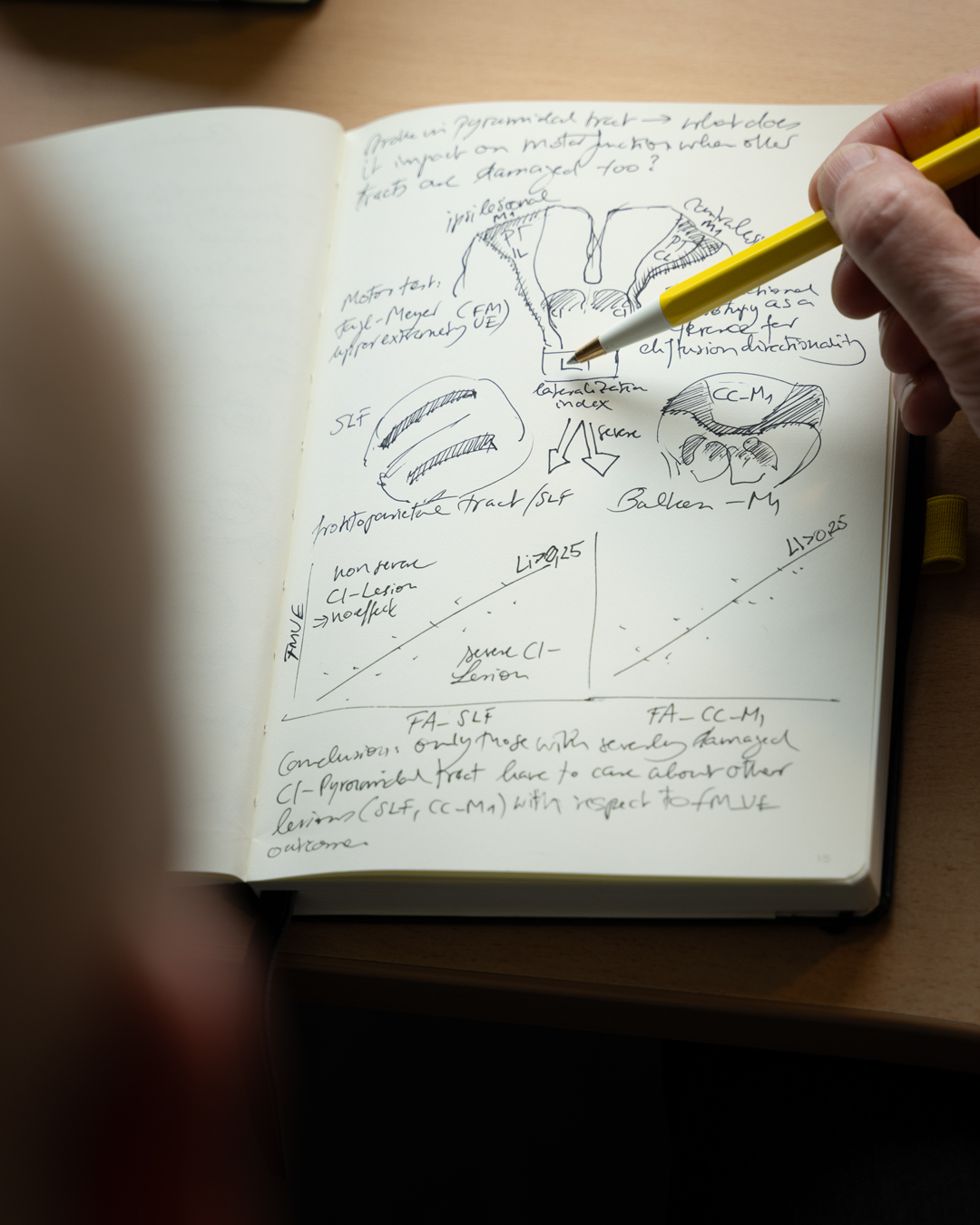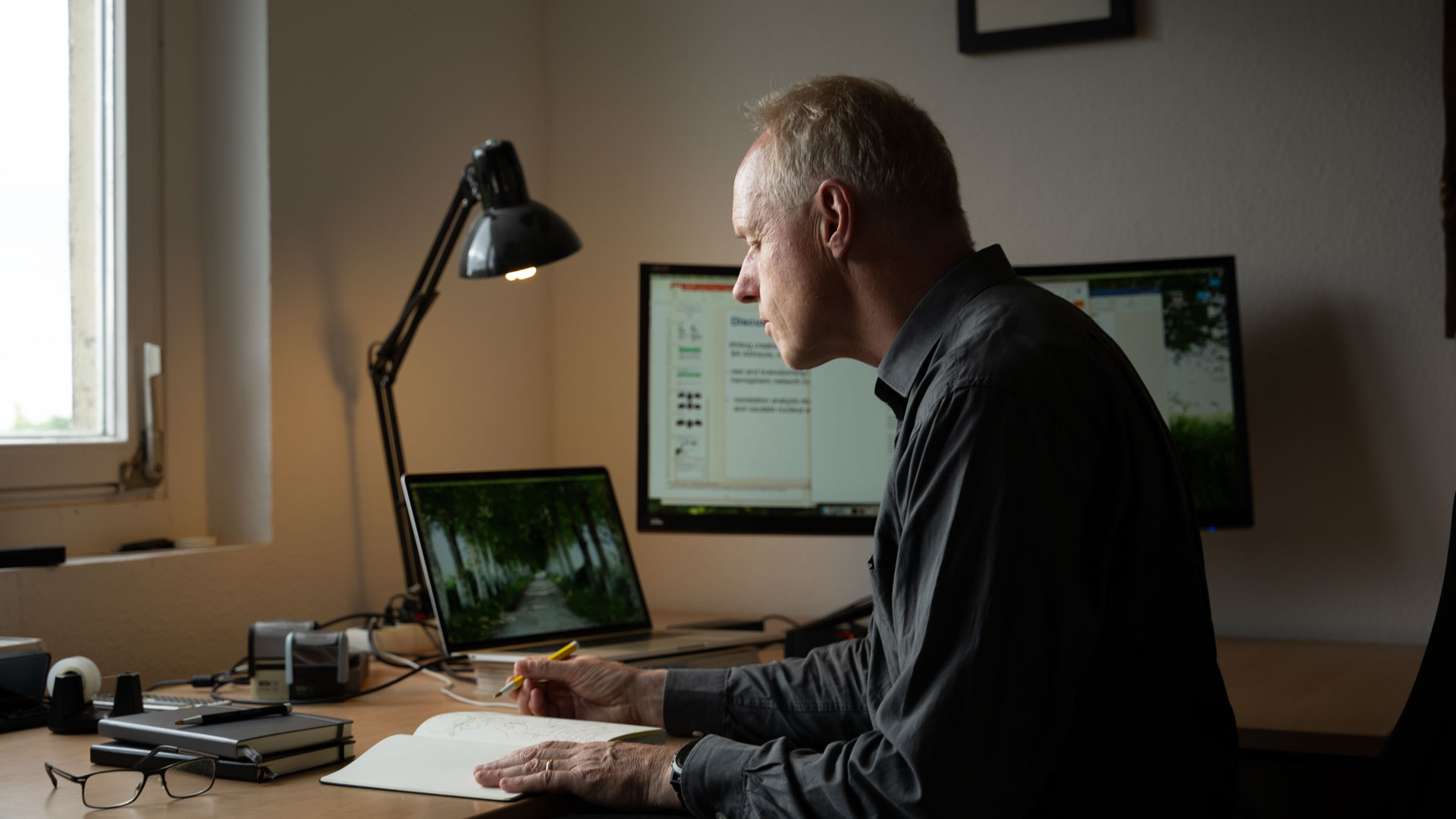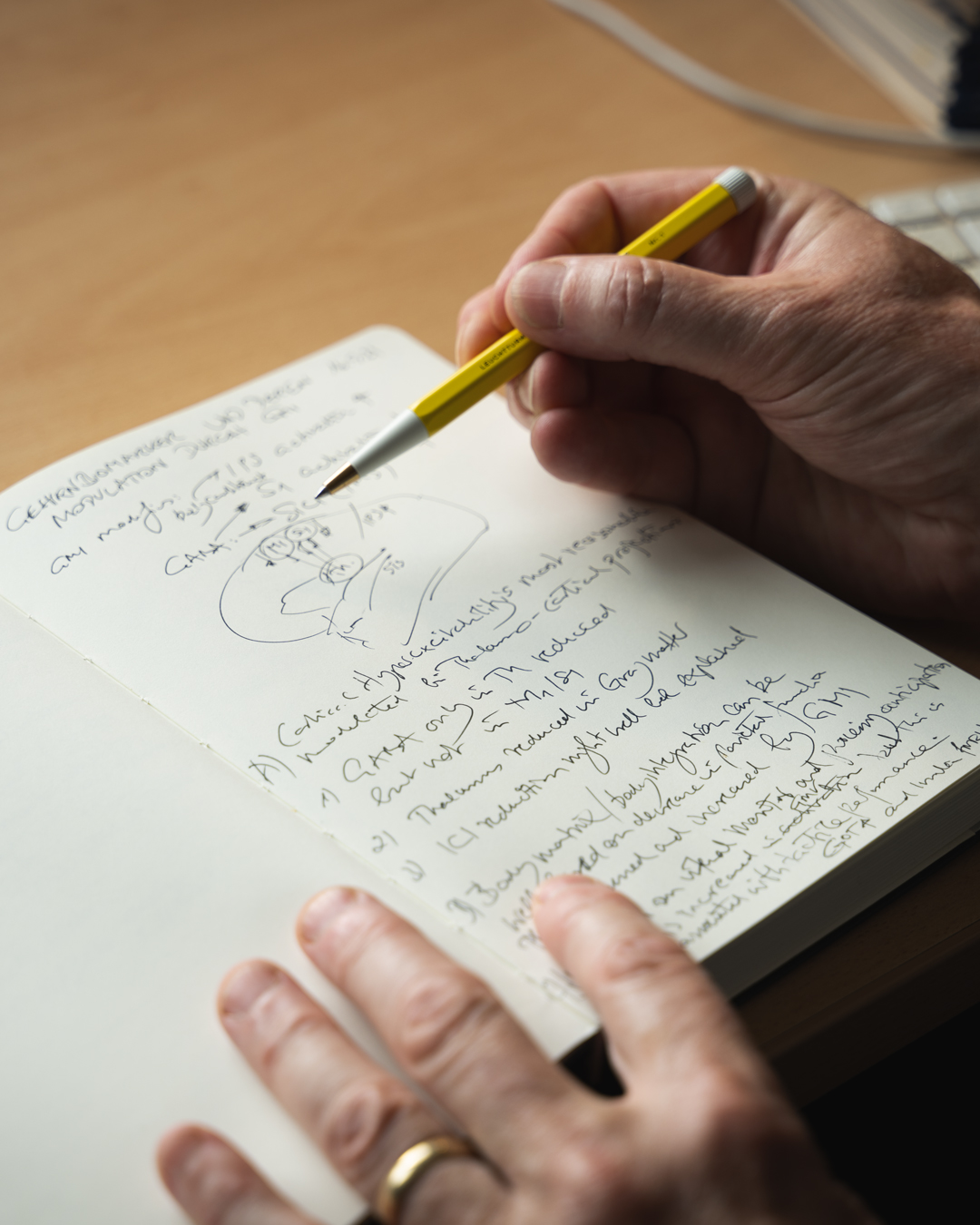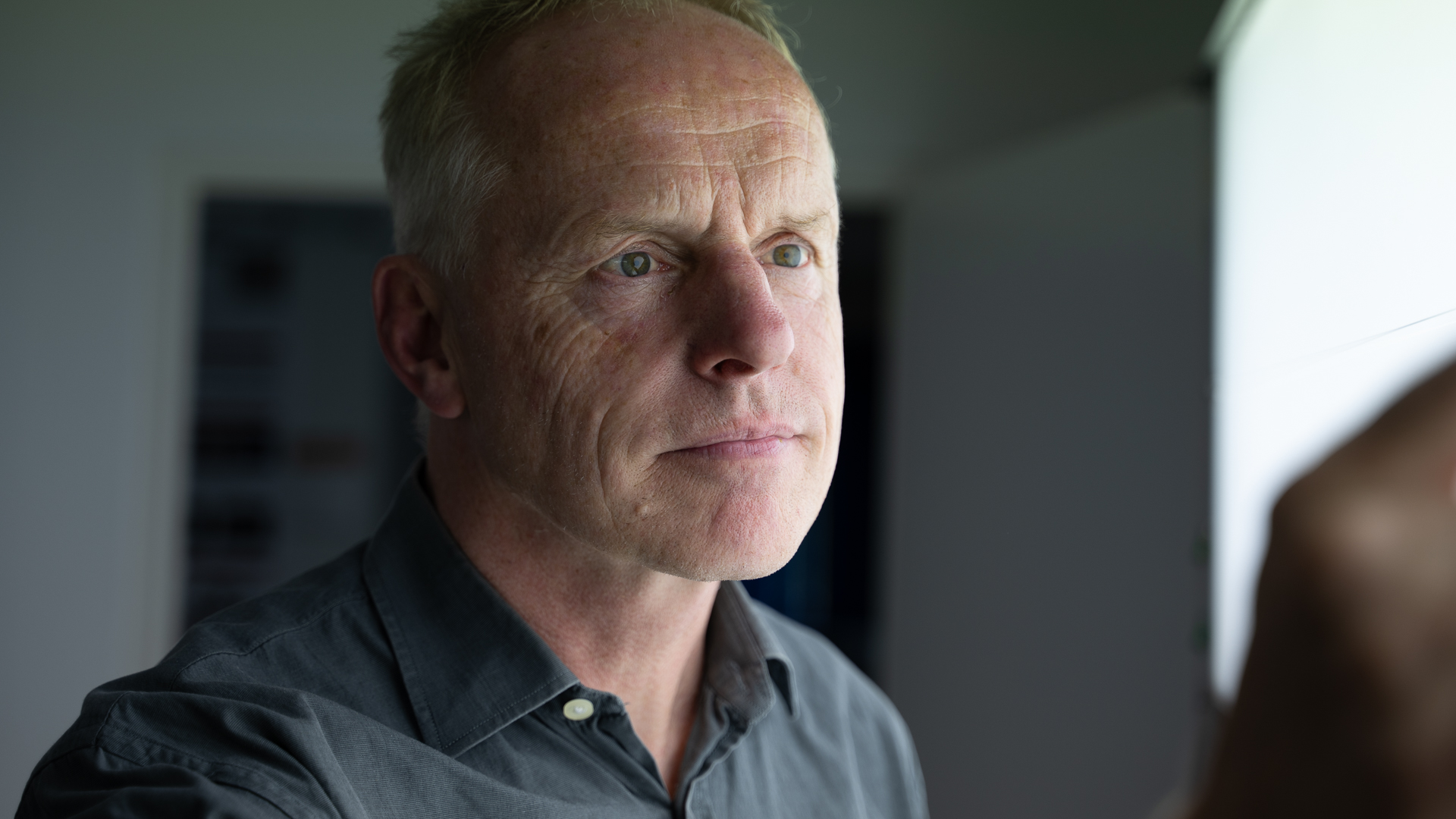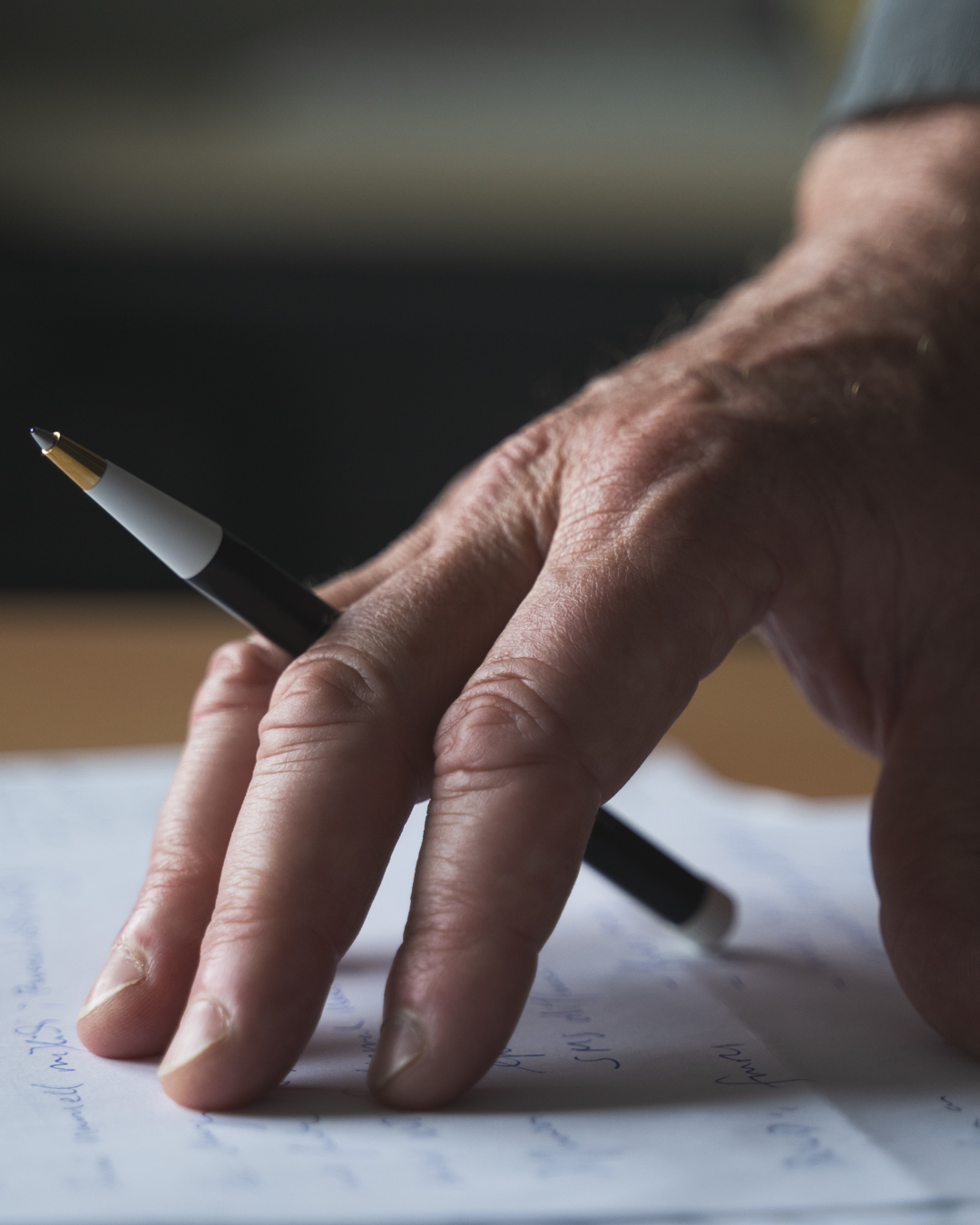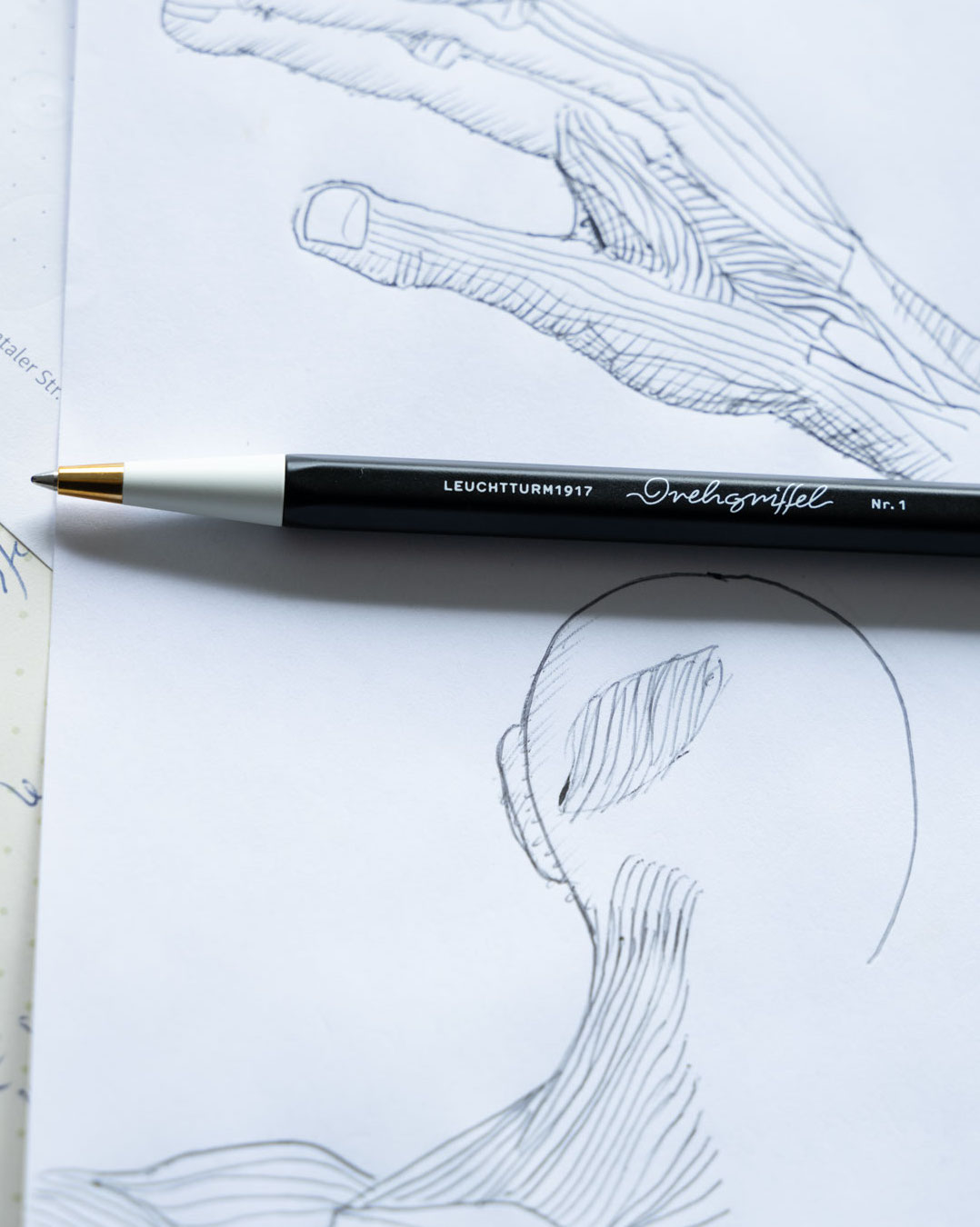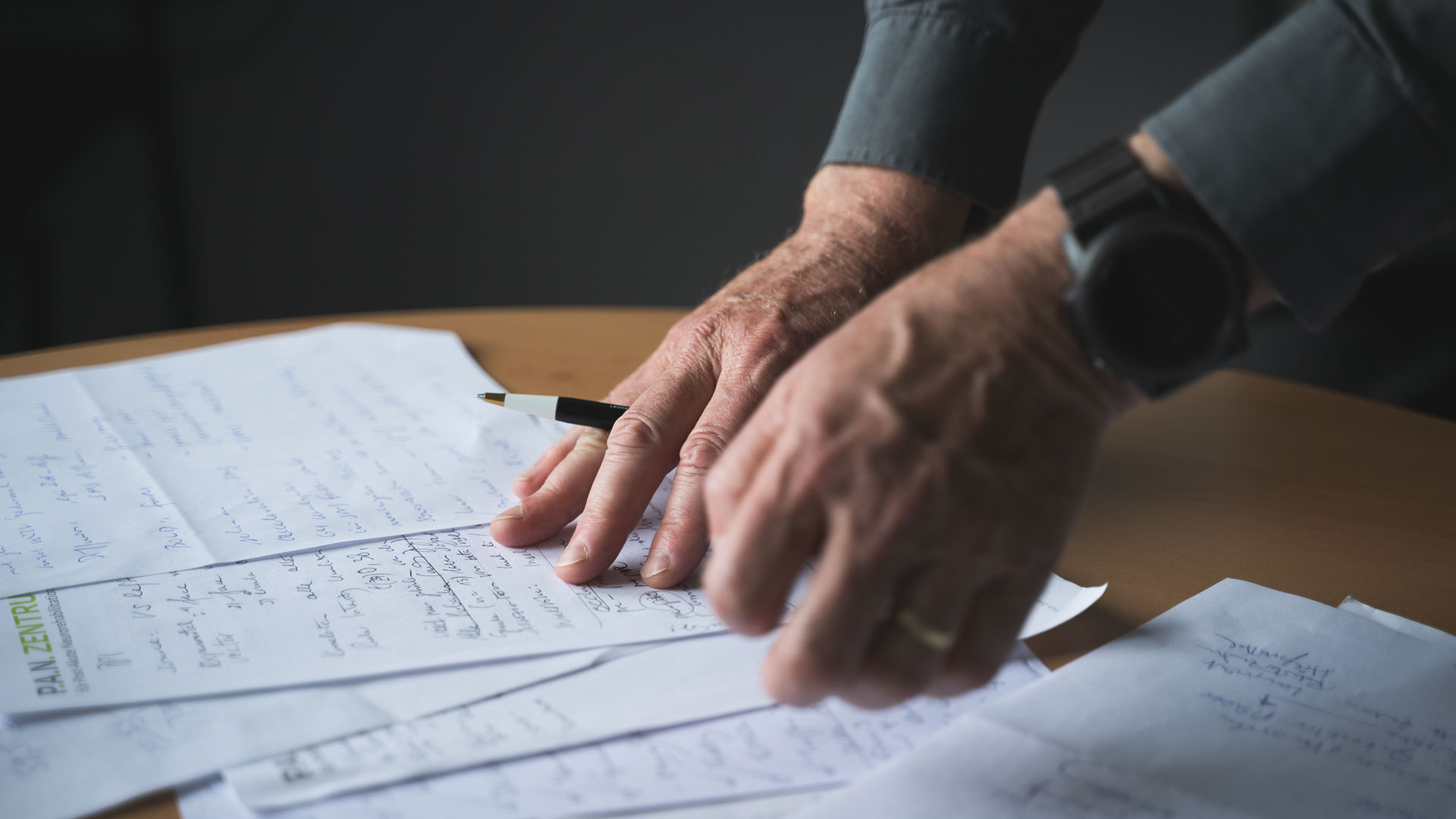Episode
Martin Lotze // Neuroscience
Symphony of Synapses
Martin Lotze is a neuroscientist who has put people in MRI scanners and watched their brains write. What did he observe? He explains what he has found out in his laboratory
Professor Lotze, you’re a neuroradiologist, so you scan people’s brains while they’re thinking. Do you still write anything by hand for your work?
Absolutely. Although I’d say I draw more than I formulate my thoughts in proper sentences and paragraphs. The fact is that when I start a project, it’s quite difficult for me to structure my thoughts without a pen and paper. I’m a visual thinker, so there’s always an image preceding every lecture or research project. While I envy people who can express neuronal processes mathematically, it’s not something that I can do. I also write all outlines for my texts by hand first. Only once the sketch has been put on paper can I start to think about how to realise it.
Do you have any particular rituals when working on paper? Does it have to be a specific type of paper or pen?
Not at all. When I make these sorts of sketches I use the first pen I find on my desk. Usually they’re promotional ballpoint pens – I don’t have any preferences. As far as the paper goes, I use whatever’s in front of me.
Is that emblematic of the unpretentious nature of scientists?
I sometimes ask myself if we shouldn’t take care of some things a bit more. But the cliché of the nerdy scientist who gets completely engrossed in his work and neglects formal details such as these absolutely does sum up many people in my field.
Neuroscience is very much a digitally oriented field. But I tend to return to my sketches. A white sheet of paper contains virtually endless possibilities.”
But you do have to transfer your sketches to a computer at some point, right? Even if it’s just to meet a publisher’s specifications or cooperate with other people in a network.
Yes, of course. Neuroscience is very much a digitally oriented field; many of my colleagues or PhD students will directly create their graphics using software. I, on the other hand, tend to return to that first sketch over and over again when I’m working on a graphic on my computer. A white sheet of paper contains virtually endless possibilities. That’s why I don’t like to work on manuscripts that have already been marked up. Every pre-established structure limits thought.
What happens with these graphics and sketches after you’ve transferred them to a digital format?
The hand-sketched graphics are archived in a lab book so they can be referred to at a later point in time. When I work on subsequent projects, the book helps me recall the methodical approach I had taken.
One of the things you research is people’s brain activity while they’re writing. Do we think differently when we write by hand?
That has now been proven, yes. The term “to grasp” is telling in this context. The part of the brain that stores movement contexts – such as writing or performing gestures – has significant overlap with the part dedicated to producing language. When we humans started to walk upright, it freed up our upper extremities and allowed us to develop a system of gestures that was essential for communication and probably marked the beginning of language. The formation of letters can also be placed within this context.
Does it activate other parts of the brain when we type on a keyboard?
Sometimes, yes. People who are very accustomed to typing may indeed be able to convey their trains of thought effortlessly through the keyboard. However, the ability to integrate drawing into the process not only reduces the level of abstractness, it also promotes a more comprehensive way of thinking. The space on a sheet of paper allows us to think beyond just a flow of letters. We can move from a linear thought process to a mind map, the elements of which are interwoven with one another in different ways. The possibility of creating multidimensional spatial representations on paper is similar to the pattern which our memory uses to make links in the neuronal structure of nerve cells.
The brains of people who write by hand work more creatively and efficiently.”
So that means we strengthen these links when we write by hand?
We’ve seen in experiments that we make long-term changes to our brain when we regularly practise these processes. By practising them, it becomes easier to create new variations that in turn allow for new oscillations. It generates an attention-driven creative flow.
How were these studies designed?
We collaborated with the Creative Writing department at the University of Hildesheim to study students’ brains in an MRI scanner while they wrote different texts by hand. We were able to demonstrate that many parts of the brain were interacting with one another in complex ways during this activity, including both the parts that control motor and sensory function and the ones that control creative thinking and organising. By carrying out comparative studies with participants who did not write regularly at work, we were also able to prove that the brain activities of the creative writing students were linked differently and worked much more efficiently. When we practise something regularly, new paths etch themselves into our brains, and this allows routines and automatisms to develop. In this respect, writing is not very different from playing the piano.
So is it safe to say that writing by hand can help us understand things better?
Yes, it is. In further studies, we found that it’s easier for people to describe the main ideas of a lecture they attended if they take notes by hand. To write by hand is to grasp something in the truest sense of the word.

Martin Lotze
Professor Martin Lotze is a neurologist and Professor of Functional Imaging at Greifswald University Hospital. Together with the neurology department there and the Literature Institute at the University of Hildesheim, he conducted a large-scale study in 2014 to investigate brain activity when writing by hand. He had students on the Hildesheim Creative Writing degree programme lie down in an MRI scanner and work on different types of text, enabling him to visualise the regions of the brain that are active during the various tasks.

